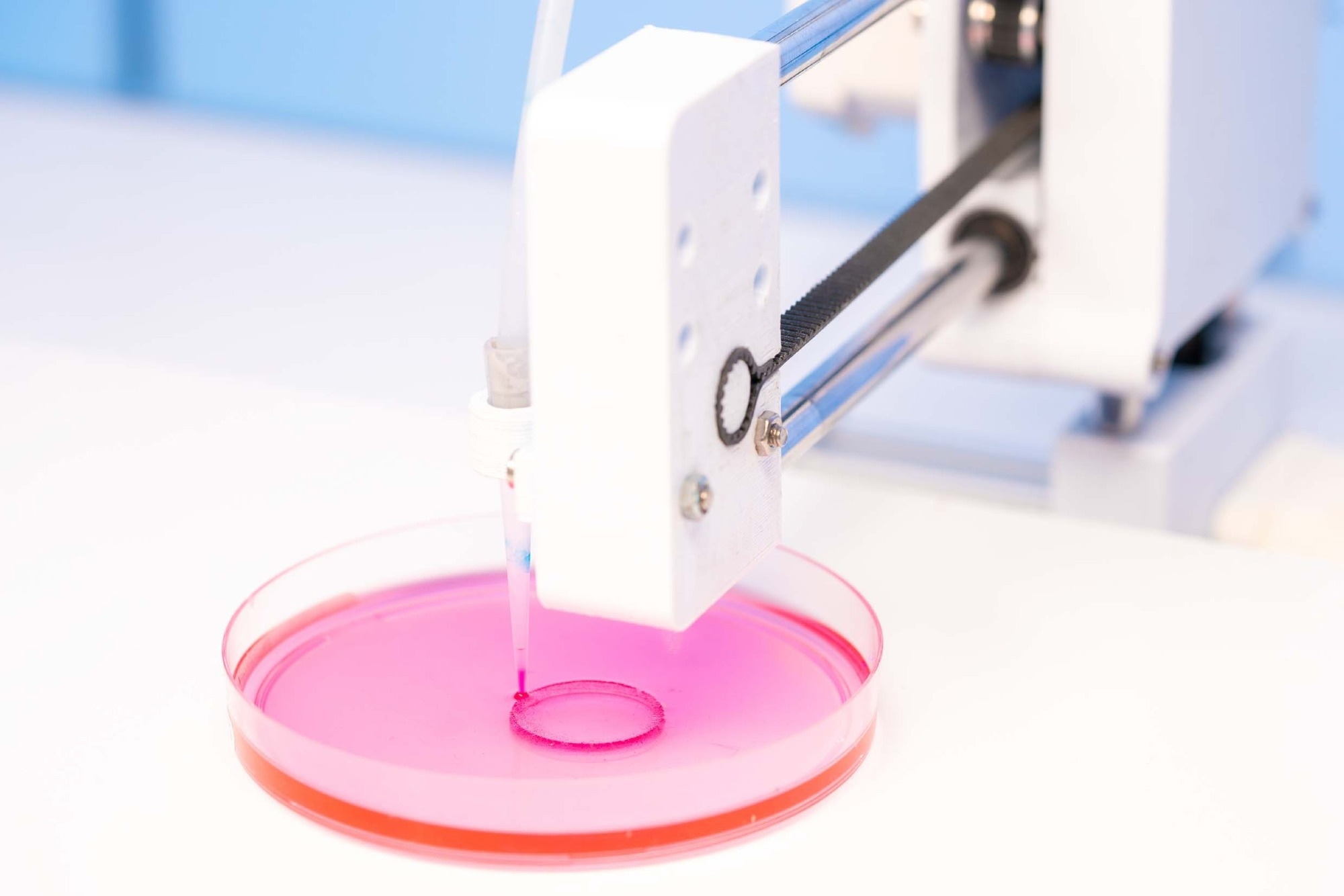 By Taha KhanReviewed by Lexie CornerUpdated on Aug 22 2024
By Taha KhanReviewed by Lexie CornerUpdated on Aug 22 20243D printing has significantly impacted how modern products are designed, produced, and distributed. Initially a tool for rapid prototyping, it has evolved into a versatile technology with applications across various industries, including manufacturing, healthcare, and aerospace.
Overview of 3D Printing
Traditional subtractive manufacturing involves cutting away material to create a product, while 3D printing is an additive process that builds objects by adding material layer by layer.
A 3D-printed model is typically created using computer-aided design (CAD) software and realized using a 3D printer, which deposits materials like plastic, metal, or resin until the final object is formed.
This additive manufacturing (AM) process not only reduces waste but also offers great flexibility by allowing the use of various materials and enabling customization, making it an efficient and cost-effective solution for both prototyping and full-scale production.1, 2
Applications in Various Fields
3D printing has evolved from a prototyping tool to a cutting-edge manufacturing process used in the aerospace, health, and automotive industries.
Aerospace and Automotive Sector
In the aerospace industry, 3D printing is used to produce lightweight, complex components that are difficult to manufacture using traditional methods. This reduces the weight of aircraft parts, contributing to fuel efficiency and lower emissions.3 Additionally, 3D printing allows for rapid prototyping and on-demand spare parts production, crucial for maintaining aircraft in remote locations.
Similarly, in the automotive sector, 3D printing is used to produce prototypes, tooling, and even final parts. The technology enables automakers to accelerate the design process, reduce development costs, and customize vehicles to meet specific customer preferences.3
Construction and Consumer Goods
3D printing is transforming the consumer goods industry by enabling mass customization. For instance, companies can now offer personalized products like fashion accessories, toys, and even electronics tailored to individual preferences.4
In the construction industry, large-scale 3D printers are used to construct buildings by extruding concrete or other materials layer by layer, reducing waste and construction time. This technology has the potential to address housing shortages, especially in disaster-stricken or remote areas, by enabling the rapid construction of affordable housing.4, 5
Healthcare

Image Credit: luchschenF/Shutterstock.com
3D printing has revolutionized healthcare by allowing the customization of medical devices, implants, and prosthetics. In particular, 3D bioprinting is paving the way for the production of tissue and organ structures.
A 2023 study highlighted significant advancements in 3D bioprinting with the development of a novel technique called SPIRIT (Sequential Printing in a Reversible Ink Template), designed to replicate both the external geometry and internal structures of organs, such as blood vessels.6
This method uses a microgel-based bioink that supports 3D printing with human-induced pluripotent stem cells, functioning as both a bioink and a suspension medium with unique shear-thinning and self-healing properties.
The SPIRIT technique enabled the fabrication of complex organ models, including a ventricle with a vascular network, offering substantial potential for replicating intricate organ structures and accelerating progress in tissue engineering and regenerative medicine.6
Global Market Analysis and Growth Trends
AM, or 3D printing, has grown significantly and is now a key component of Industry 4.0. By 2030, the 3D printing and AM market is expected to generate approximately $2 trillion in components and finished products, driven by the technology's ability to produce intricate parts, minimize waste, and reduce lead times.
The technology is expected to revolutionize industries by enabling on-demand production and localized manufacturing, which in turn shortens supply chains and reduces inventory costs.7
The rise of 3D printing is particularly evident in sectors such as aerospace, healthcare, and automotive, where 3D-printed parts already account for 20 % of the AM market. As the technology evolves, advancements like cold spray additive manufacturing are emerging, offering improved material properties and environmental benefits.7
Regional Insights
The adoption of 3D printing technology varies significantly across regions, influenced by factors such as industrialization, technological advancement, and government support.
In North America, for example, the 3D printing market was valued at USD 4.46 billion in 2022 and is projected to reach USD 16.59 billion by 2032, with a compound annual growth rate (CAGR) of 15.7 %. This growth is driven by efficient material usage, reduced production costs, and customization capabilities, with key sectors like automotive, aerospace, healthcare, and defense leading the charge. Notably, the automotive industry held 37.8 % of the market share in 2022.8
Similarly, the Asia-Pacific 3D printing market is expected to reach approximately $29.34 billion by 2032, expanding at a strong CAGR of 19.19 % from 2023 to 2032.9
Future Perspectives
In the next decade, a surge of innovative 3D printing applications is expected to significantly advance industries such as aerospace, automotive, and healthcare. North America and the Asia-Pacific regions are expected to be at the forefront of these advancements.
With technological progress, growing adoption, and a focus on customization and efficiency, the global 3D printing market is on track for substantial growth.
More from AZoM:
Unlocking the Secrets of Additive Manufacturing: Real-time Monitoring of 3D Printed Parts Using Dynamic Micro-CT
References and Further Reading
- Pereira, T., Kennedy, JV., Potgieter, J. (2019). A comparison of traditional manufacturing vs additive manufacturing, the best method for the job. Procedia Manufacturing. doi.org/10.1016/j.promfg.2019.02.003
- Attaran, M. (2017). The rise of 3-D printing: The advantages of additive manufacturing over traditional manufacturing. Business horizons. doi.org/10.1016/j.bushor.2017.05.011
- Mohanavel, V., Ali, K. A., Ranganathan, K., Jeffrey, J. A., Ravikumar, MM., Rajkumar, S. (2021). The roles and applications of additive manufacturing in the aerospace and automobile sector. Materials Today: Proceedings. doi.org/10.1016/j.matpr.2021.04.596
- Iftekar, SF., Aabid, A., Amir, A., Baig, M. (2023). Advancements and limitations in 3D printing materials and technologies: a critical review. Polymers. doi.org/10.3390/polym15112519
- Hossain, MA., Zhumabekova, A., Paul, SC., Kim, JR. (2020). A review of 3D printing in construction and its impact on the labor market. Sustainability. doi.org/10.3390/su12208492
- Fang, Y., et al. (2023). Expanding embedded 3D bioprinting capability for engineering complex organs with freeform vascular networks. Advanced Materials. doi.org/10.1002/adma.202205082
- Prashar, G., Vasudev, H., Bhuddhi, D. (2023). Additive manufacturing: expanding 3D printing horizon in industry 4.0. International Journal on Interactive Design and Manufacturing (IJIDeM). doi.org/10.1007/s12008-022-00956-4
- Spherical Insights. (2023). North America 3D Printing Market. [Online] Spherical Insights. Available at: https://www.sphericalinsights.com/reports/north-america-3d-printing-market (Accessed on 16 August 2024)
- Inkwood Research. (n.d). Asia-Pacific 3d Printing Market Forecast 2023-2032. [Online] Inkwood Research. Available at: https://www.inkwoodresearch.com/reports/asia-pacific-3d-printing-market/ (Accessed on 16 August 2024)
Disclaimer: The views expressed here are those of the author expressed in their private capacity and do not necessarily represent the views of AZoM.com Limited T/A AZoNetwork the owner and operator of this website. This disclaimer forms part of the Terms and conditions of use of this website.